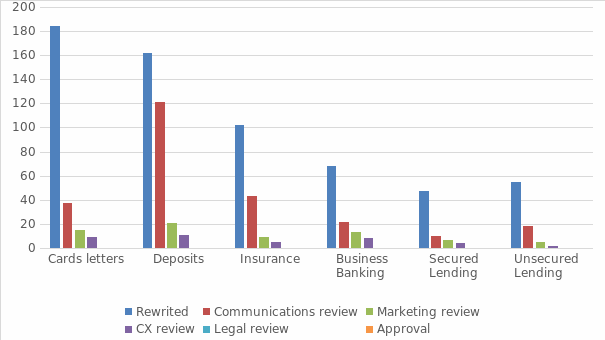Introduction
The Canadian Imperial Bank of Commerce (CIBC) is a large corporation, which specialization implies delivering banking and financial services. It is based in Toronto, Canada, and was founded in the middle of the 20th century. These days, all organizations in various fields pay a significant amount of attention to the way of communicating with their clients, as it is considered to impact loyalty and service satisfaction. In order to be competitive in the market and provide the customers with services of high quality, CIBC established a project on rewriting all client communications, including direct mail and emails.
Benefits of the Project
Improving client communication is vital for the further development of a business. When interacting with back representatives, customers need to feel the guarantee of their financial security. Consequently, it is possible to convey the careful attention of the bank to the client via emails and letters, which are written in a friendly tone (Patterson, 2016). People will be more likely to trust the bank, which provides a clear response to them in a polite manner.
In addition, such a strategy may be helpful for attracting first-time customers. According to Patterson (2016), they “have difficulty in evaluating the outcome quality and value-for-fee paid even after purchase and consumption of the service” (para. 4). In these circumstances, polite conversations may help new customers to orient in a variety of bank services and make the most rational choice. Therefore, this approach may prompt first-time clients to use the bank services on a constant basis, which guarantees the growth of the company.
Another considerable benefit of improving all client communication implies its influence on the customers’ service satisfaction. Patterson (2016) marks: “interpersonal communication has a pivotal role to play in influencing client perceptions of both outcomes (“what” was produced) and process quality (“how” it was produced), that is their total experience” (para. 4). For this reason, conducting such a project may present a sufficient measure for avoiding customer choosing opponents on the market.
The last argument, proving the effectiveness of improving all client communications within CIBC, is targeting customers, who require services of exceptional quality. Owners of premium cards are frequently supplied with a personal manager, who is expected to help them find an appropriate solution for financial requests. In this case, the importance of polite communication and giving precise answers to the customer should not be underestimated. Such people pay additionally for premium service, and their needs should be taken into consideration for maintaining the company’s competitiveness.
Stakeholders
Stakeholders appear to be interested in realizing this project, as it is considered to improve customers’ loyalty and, as a result, increase the bank’s revenue. For this reason, some of the constant shareholders provided CIBC with additional funding. They are Mackenzie Financial Corporation, CIBC World Markets, and the Vanguard Group. All the investments received from them will be directed to the realization of analyzing and rewriting all client communications.
Implementation Plan
The first step of the implementation process involves analyzing letters and emails on the subject of unfriendly tone and harshness and dividing them into three sections, depending on the number of faultiness. This stage also involves assessing the letters in three categories for conducting fax removal: easy, medium, and hard. The second step includes rewriting letters by each Line of Business and reviewing them by the Communication Team. All the items are checked by different departments: Marketing and Customer Experience team and Legal and Compliance Team. Finally, after all the corrections are made, letters should complete the approval procedure.
The Progress of the Project

Dashboard 1 traces the progress of rewriting letters within CIBC. All the letters are divided into five categories: cards, deposits, insurance, business banking, secured lending, and unsecured lending. All the letters are expected to complete three phases: rewriting, review, and approval. The number of items, which passed the first phase, is highlighted in blue in Dashboard 1. The second stage involves four steps: communications review, marketing review, CX review, and legal review.
As it may be seen in Dashboard 1, none of the letters have completed the phase of CX and legal reviews. The number of items, which passed the communications review, is demonstrated with red color in Dashboard 1, which is less, compared to the number of rewritten letters. As for marketing reviewed items, they are depicted with green color in Dashboard 1, and their number is significantly less than the number of communications reviewed letters. The number of CX-reviewed items is the least of all, and it is highlighted with purple color in Dashboard 1.
Conclusion
After examining Dashboard 1, which traces the progress of the project, it is possible to conclude that the work has begun recently, and a considerable number of letters have already been rewritten. However, a significant amount of work should be done in the future for finishing the project and improving client communication. None of the letters have completed the two last sections of the second phase and the third phase.
Reference
Patterson, P. (2016). Retrospective: tracking the impact of communications effectiveness on client satisfaction, trust and loyalty in professional services. Journal of Services Marketing, 30(5), 485-489. Web.
